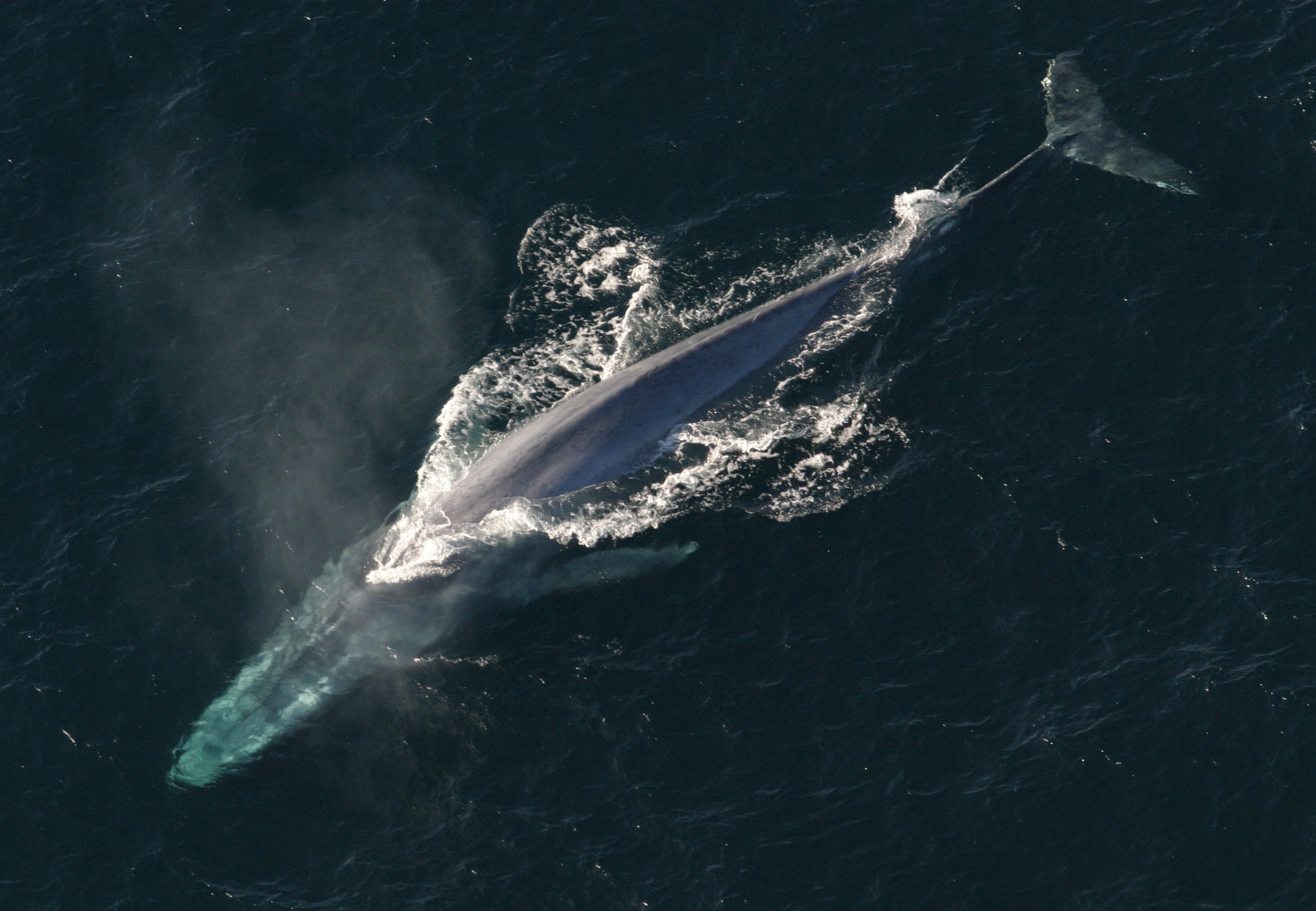Based on a fossil specimen discovered in deposits from Peru, Perucetus colossus, a new early whale species, is described and characterized by surprisingly heavy bones. Combining this massive skeleton with a body length of about 20 meters results in record-breaking body weight estimates. It makes this slow-swimming coastal giant a contender to the title of the heaviest animal ever.
Views 4744
Reading time 4 min
published on Nov 27, 2023
Which animal is the largest? The fastest? The most ferocious? These are some of the first topics in natural sciences to be discussed between children. These should not be considered as trivial, as they often lead to relevant questions about how, when, and why such extreme living beings evolved. With a total body weight occasionally reaching 190 tons, the blue whale has long been recognized as the heaviest animal that ever lived on Earth, far above the largest sauropod dinosaurs. Up to now, the fossil record of cetaceans (whales, dolphins and their extinct relatives) revealed that the emergence of giants is a relatively recent phenomenon (considering an origin of the group from a terrestrial ancestor dated to more than 50 million years ago). It was thought to have occurred among fully oceanic, filter-feeding baleen whales about 5 million years ago. But paleontological research is constantly yielding new, fascinating discoveries that make us revise our views of the history of life.
Thirteen years ago, the first fossil remains of a mysterious giant marine animal were discovered by the paleontologist Mario Urbina in a desert along the southern coast of Peru. It took several years and multiple fieldtrips to eventually realize that the enormous bones, now dated from the middle Eocene (about 39 million years old), belong to an extinct whale with extreme dimensions. In total, 13 vertebrae, four ribs and one hip bone were collected by our Peruvian colleagues. The huge vertebrae, each weighing more than 100 kgs, and the large ribs, up to 1.4 m-long, point to a giant marine mammal, but the tiny hip bone proved crucial for the identification of this skeleton. Indeed, its shape indicates the presence of tiny hind limbs, as described in the extinct cetacean family Basilosauridae. This group includes the first fully aquatic cetaceans (without adequately sized hind limbs, it is not possible to move on land anymore), and it is thought to have given rise to the two modern cetacean suborders, Mysticeti (baleen whales) and Odontoceti (echolocating toothed whales).
Apart from its large size (total length estimated at 20 m), the new basilosaurid is unique in the extremely high volume and compactness of all the recovered bones, a condition named pachyosteosclerosis. Surface scanning allowed for the calculation of bone volumes, while drillings revealed bone inner structure. Together, these parameters helped us in calculating the original weight of each bone. Then, completing the missing parts with other basilosaurid skeletons, we could provide a range of estimates for the total weight of the skeleton. Between 5 and 7.5 tons, which is two to three times heavier than a blue whale's skeleton! And that's not all, based on a database of skeletal and total body weights for many mammals, we calculated an interval of body weight estimate for this extinct whale between 85 and 340 tons. This is in the range of the blue whale (weighing up to 190 tons), or even higher.
These astonishing numbers made our international team propose the name Perucetus colossus (the colossal whale from Peru) for this new species, but also led to a series of questions. What were the advantages of having such a heavy skeleton? In which environment did this whale live? Which prey types did it target? And how did it acquire its food?
Similarly, massive bones are generally observed in slow-swimming aquatic animals, feeding along the seafloor in coastal waters. The best modern example is sirenians (manatees and dugong), and we do not take too many risks in proposing that Perucetus was a slow animal living in shallow waters, where its weigh may have helped it keeping the right position along the bottom, even while undergoing strong waves. However, all sirenians are herbivorous, feeding on algae and seagrasses, whereas all cetaceans, including other basilosaurids, prey(ed) upon other animals. Though a shift of Perucetus to an herbivorous diet cannot be completely ruled out, this sounds rather unlikely. Another hypothesis is that it fed on slow-moving or even immobile invertebrates, like modern walruses targeting clams. Discovering the skull and teeth of Perucetus would be essential to test these different hypotheses. Also, finding new fossils of this unique animal could provide clues about its extinction. All basilosaurids disappeared before 33 million years ago, and this event has been tentatively correlated to a cooling phase and associated changes in the biodiversity of coastal environments. Some of their descendants, the first mysticetes and odontocetes, invaded more oceanic regions and became the successful groups that we know today, including some of the heaviest (but maybe not the heaviest...) animals ever.
Original Article:
Bianucci, G., Lambert, O., Urbina, M., Merella, M., Collareta, A., Bennion, R., Salas-Gismondi, R., Benites-Palomino, A., Post, K., Muizon, C. de, Bosio, G., Di Celma, C., Malinverno, E., Pierantoni, P. P., Villa, I. M. & Amson, E., 2023. A heavyweight early whale pushes the boundaries of vertebrate morphology. Nature, 620: 824-829.
 Evolution & Behaviour
Evolution & Behaviour



